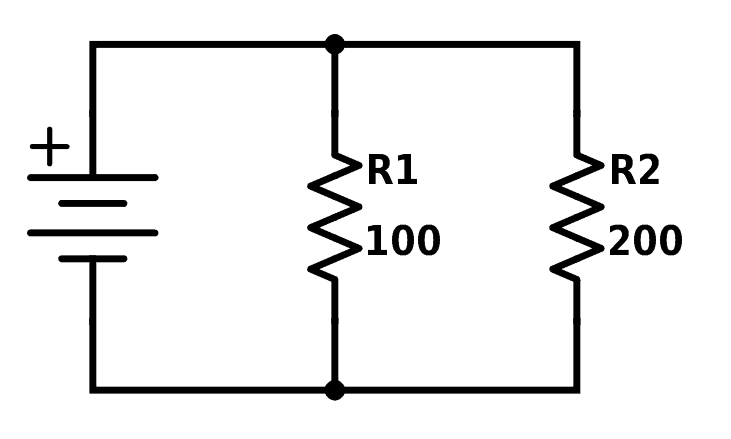Imagine a circuit with two resistors in parallel.
If you’re not sure what that looks like, look at this image:
Let’s ignore the values above and instead say that R1 is 100 Ω and R2 is 100 000 Ω.
Can you quickly find the combined value of the two of them?
What if both of the values are 300 Ω?
You *could* use the formula for resistors in parallel and calculate it.
But there’s a quicker way.
“Mindtools” for resistors in parallel
Here are 3 “mind tools” to find parallel values without a calculator:

Get Our Basic Electronic Components Guide
Learn how the basic electronic components work so that circuit diagrams will start making sense to you.
- The total resistance of two resistors in parallel is always smaller than the smallest resistor value.
- If the difference between the two resistors is large (100 times or more), the resulting value is approximately the same as the smallest resistor.
- If the two values are equal, the total resistance is half of the resistance value of one of the resistors.
Using these, you can easily find the answer to the questions above:
- 100 Ω in parallel with 100000 (one hundred thousand) Ω is approximately 100 Ω.
- 300 Ω in parallel with 300 Ω is 150 Ω.
When you’ve done this enough, it becomes second nature.
This skill, together with a few more basic analysis-skills, will help your ability to look at a circuit diagram and understand what it does/how it works.
I took these tips from the course Learn Electronics: The Resistor from Ohmify.
The course teaches you to combine resistances, and then “see” the voltages and currents in the circuit. Which is probably one of the most important theoretical skills in electronics.
Keep On Soldering!
Oyvind @ build-electronic-circuits.com
More Mail Archive Tutorials

Get Our Basic Electronic Components Guide
Learn how the basic electronic components work so that circuit diagrams will start making sense to you.

